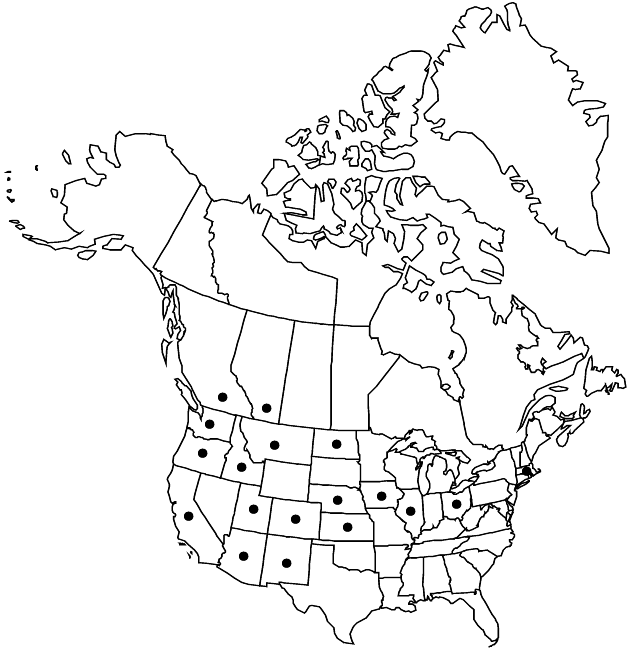Carthamus tinctorius
Sp. Pl. 2: 830. 1753.
Plants 30–100+ cm, herbage ± glabrous. Stems ± stramineous, glabrous. Leaves usually all cauline, dark green; blades lanceolate to elliptic or broadly ovate, 2–8.5 cm, margins dentate with minutely spine-tipped teeth, veiny, shiny. Involucres ovoid, 20–40 mm diam., ± glabrous. Outer phyllaries spreading to reflexed, 1.5–2 times longer than inner, terminal appendages minutely spiny-toothed, minutely spine-tipped. Corollas yellow to red, 20–30 mm, throats abruptly expanded; anthers yellow to red; pollen yellow to red. Cypselae white, 7–9 mm, slightly roughened; pappus-scales absent or if present, 1–4 mm. 2n = 24.
Phenology: Flowering late spring–summer (May–Aug).
Habitat: Escaped from cultivation in disturbed sites
Elevation: 0–900 m
Distribution

Introduced; Alta., B.C., Ariz., Calif., Colo., Idaho, Ill., Iowa, Kans., Mass., Mont., Nebr., N.Mex., N.Dak., Ohio, Oreg., Utah, Wash., Europe
Discussion
Carthamus tinctorius is apparently native originally to the eastern Mediterranean; it is known only in cultivation and as escapes today. Safflower has been reported from Texas; I have not seen the specimen.
Safflower is cultivated as an oil seed, a source of vegetable dye, as birdseed, and as an ornamental. It is one of the earliest known crop plants, with cultivation dating back to prehistoric times. In the United States safflower is grown principally in California and Arizona; it has been a successful crop in every state west of the 100th meridian.
Carthamus oxyacantha M. Bieberstein (wild safflower) was collected in 1978 in Monterey County, California. It is considered by the United States Department of Food and Agriculture to be a noxious weed subject to eradication if found. In central and southern Asia it is a pernicious weed of agricultural lands and other disturbed ground. Carthamus oxyacantha most closely resembles cultivated safflower; it has smaller heads and much spinier leaves. Its cypselae are usually darkly pigmented, smaller (4–5 mm versus 5.5–9 mm), and almost always lack pappi.
Selected References
None.
Lower Taxa
"fine" is not a number.